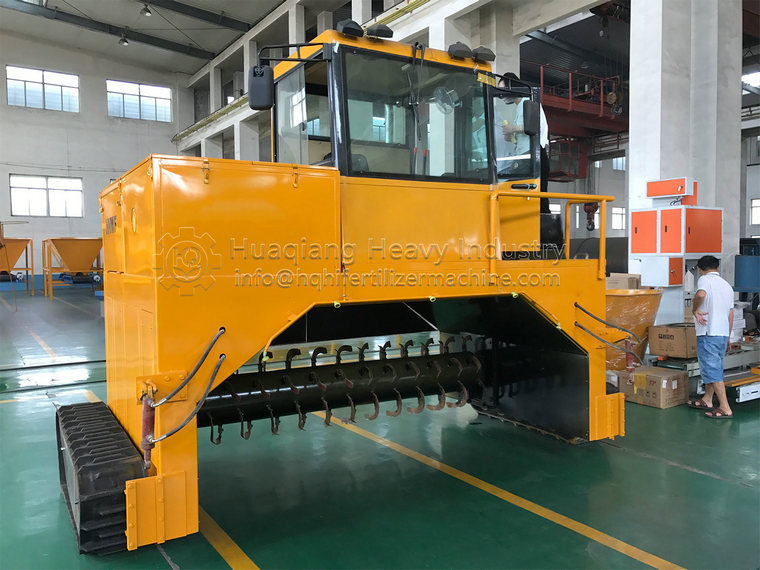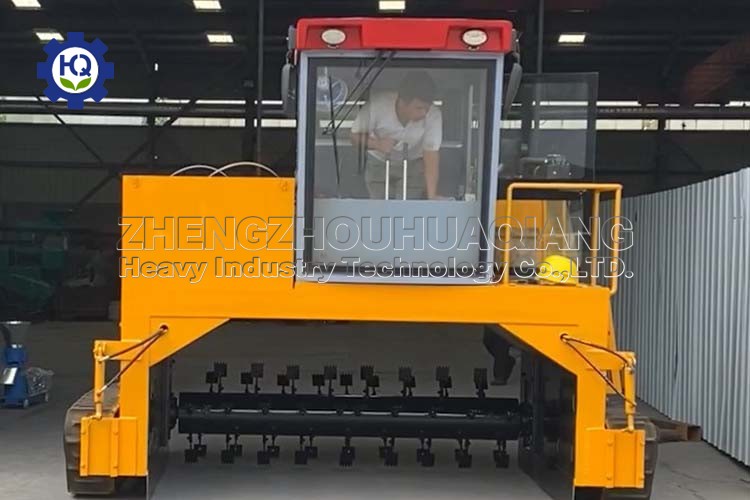With the development of technology, the new intelligent organic fertilizer turning machine shows significant differences compared to traditional turning machines in many aspects.
From the perspective of control methods, traditional organic fertilizer turning machines mainly rely on manual operation. Operators need to control the operation of the equipment on site through buttons, levers, and other means, including turning speed, walking direction, etc. This operation method is not only labor-intensive, but also prone to human errors. The new intelligent stacker is equipped with an advanced intelligent control system, which can achieve automated operations through preset programs. Operators only need to set parameters such as flipping time, depth, walking route, etc. in the control room or through terminal devices such as mobile phones, and the equipment can automatically complete the flipping task, greatly improving the accuracy and convenience of operation.
In terms of monitoring and feedback, traditional turntables lack real-time monitoring functions, making it difficult for operators to accurately understand the internal operating conditions of the equipment and the fermentation of materials. The new intelligent turning machine is equipped with various sensors that can monitor the operating parameters of the equipment in real time, such as motor temperature, speed, turning force, etc. It can also monitor fermentation indicators such as material temperature and humidity. Once an abnormal situation occurs, the system will promptly issue an alarm and provide data feedback to the operator for timely adjustment of equipment operation status.
In terms of optimizing the flipping effect, the flipping mode of traditional flipping machines is relatively fixed and difficult to flexibly adjust according to the actual situation of the materials. The new intelligent turning machine, with the help of intelligent algorithms and data analysis, can automatically adjust turning parameters such as turning frequency and depth based on the characteristics of materials and fermentation stages, ensuring more complete and uniform material fermentation and improving fertilizer quality.
In terms of energy utilization efficiency, traditional turntables have relatively high energy consumption because they cannot be precisely regulated according to actual loads during operation. The new intelligent stacker adopts energy-saving technology, and the intelligent control system can automatically adjust power according to the working status of the equipment, reducing energy waste and achieving energy conservation and emission reduction.
In terms of equipment maintenance, traditional flipping machines mainly rely on manual regular inspections, which makes it difficult to detect potential faults in advance. The new intelligent stacker can predict possible equipment failures in advance through big data analysis and fault prediction technology, remind maintenance personnel to perform maintenance in a timely manner, reduce equipment downtime, and extend equipment service life.
The new intelligent organic fertilizer turning machine has significantly improved compared to traditional turning machines in terms of control mode, monitoring feedback, turning effect, energy utilization, and equipment maintenance. Although the price of the new intelligent turning machine may be higher, in the long run, its advantages of high efficiency, precision, and energy saving will bring greater economic benefits and competitiveness to organic fertilizer production enterprises.





